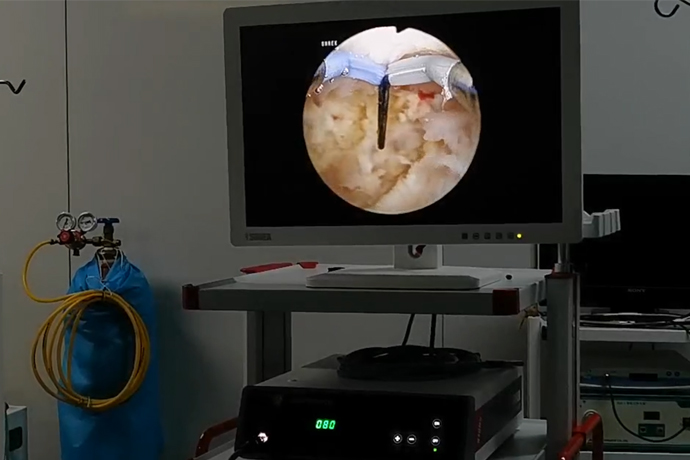- Shanghai, China
- [email protected]
- +86-21-58189111
Steps
1. Anesthesia and analgesia: You can choose any of the following:
(1) Indomethacin suppository: 50-100 mg of indomethacin suppository is inserted into the deep anus 20 minutes before the examination.
(2) Paracervical nerve block anesthesia: inject 5-10ml of 1% procaine into each side of the cervix.
(3) Surface anesthesia of the cervical canal mucosa: Use a long cotton swab soaked in 2% lidocaine solution to insert into the cervical canal, at the level of the internal cervical orifice, and keep it for 1 minute.
(4) Uterine mucosal spray anesthesia: 8ml of 0.25% bupivacaine was sprayed on the endometrial surface through a special lumen injector, and checked after 5 minutes.
2. Inspection method: take the lithotomy position, routinely disinfect the vulva and vagina, clamp the anterior lip of the cervix with cervical forceps, probe the depth and direction of the uterine cavity, and expand to 6.5-7 according to the outer diameter of the sheath. Commonly used 5% glucose solution or normal saline to distend the uterus, first empty the air between the mirror sheath and the optical mirror tube, slowly insert the hysteroscope, turn on the light source, and inject the uterine distention fluid. ), after the uterine cavity is filled, the field of vision is bright, and the mirror can be rotated and comprehensively observed in sequence. First check the fundus and the anterior, posterior, left and right walls of the uterine cavity and then check the uterine horns and the opening of the fallopian tubes. Pay attention to the shape of the uterine cavity, whether there is abnormal endometrial or space-occupying lesions, if necessary, the shape of the uterine cavity, whether there is abnormal endometrial or space-occupying lesions, locate the biopsy if necessary, and finally carefully examine the cervix when the scope is slowly pushed out Internal mouth and cervical canal.

Equipment introduction
Hysteroscopy is a new, minimally invasive gynecological diagnosis and treatment technology, a fiber-optic endoscope for intrauterine inspection and treatment, including hysteroscope, energy system, light source system, perfusion system and imaging system; It uses the front part of the scope to enter the uterine cavity, which has a magnifying effect on the observed part, and becomes the preferred inspection method for gynecological hemorrhagic diseases and intrauterine lesions in an intuitive and accurate manner. The size, appearance and scope of the lesion, and the tissue structure on the surface of the lesion can be carefully observed, and the material or the curettage can be obtained under direct vision, which greatly improves the accuracy of the diagnosis of intrauterine diseases, and updates, develops and makes up for the traditional diagnosis and treatment. insufficiency of the method. For most of the patients who are suitable for diagnostic curettage, it is more reasonable and effective to first perform hysteroscopy to identify the lesion site and then perform biopsy or curettage. It can accurately measure the volume of the uterine cavity and whether the fallopian tubes are unobstructed, and carry out effective interventional examination and treatment for infertility caused by small uterus, immature uterus, intrauterine adhesions, and blocked fallopian tubes. The cause of infertility is Guojin's infertility examination and treatment instrument.
Technical advantages
Accurate measurement: High-tech minimally invasive diagnosis and treatment equipment can achieve accurate measurement of intrauterine lesions to the greatest extent;
More accurate diagnosis: High-tech fiber light source endoscope, including hysteroscope, energy system, light source system, perfusion system and imaging system, is more direct, accurate, reliable, reduces missed diagnosis, significantly improves the diagnostic accuracy, not only can directly see Examining the physiological and pathological lesions in the uterus, it can also unblock blocked fallopian tubes, remove submucosal fibroids, or remove the endometrium that causes bleeding;
Surgery without laparotomy: A model of minimally invasive surgery, hysteroscopic surgery has the characteristics of less pain, less bleeding, shorter operation time, faster postoperative recovery, shorter hospital stay, fewer complications, and no impact on ovarian function. Physiological integrity, minimal trauma.
Leave a Comments